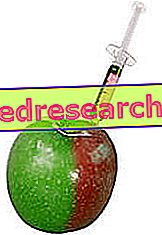Related articles: Gestational pemphigoid
Definition
Gestational pemphigoid (or herpes gestationis) is a skin disease that occurs during pregnancy or after childbirth.
Unlike what the name may suggest, the condition is not caused by any viral agent. The gestational pemphigoid, in fact, recognizes an autoimmune origin: autoantibodies of the IgG1 class bind with high avidity to the complement and to a 180KDa antigen, present both in the basement membrane of the skin and in the placenta. An inflammatory reaction is therefore established, from which the typical cutaneous manifestations of the disease follow.
Gestational pemphigoid usually begins during the 2nd or 3rd trimester of pregnancy, but can also occur during the 1st trimester or immediately after birth. In about 25% of cases, the disorder tends to recur in subsequent pregnancies or following the use of oral contraceptives.
Most common symptoms and signs *
- bubbles
- Erythema
- plaques
- itch
- blisters
Further indications
Gestational pemphigoid typically manifests as a very itchy rash . Blisters and blisters represent the most specific lesions, but erythematous plaques may also develop. The rash often originates around the navel, therefore it expands to hands, feet, limbs, trunk and buttocks; the face and mucous membranes are not generally affected sites.
In most women, gestational pemphigoid worsens during labor or immediately after birth. In some cases, transient lesions may also occur in neonates due to the passage of autoantibodies through the placenta.
The clinical signs of gestational pemphigoid can be confused with other cutaneous manifestations related to pregnancy. The diagnostic confirmation is provided by the direct immunofluorescence of the perilesional skin, which demonstrates the presence of linear C3 deposits in the epidermal basement membrane area, due to the activation of the complement in response to autoantibodies.
Gestational pemphigoid undergoes spontaneous remission within a few weeks or a few months. To relieve itching and prevent new lesions, the use of topical or systemic corticosteroids may be indicated.


